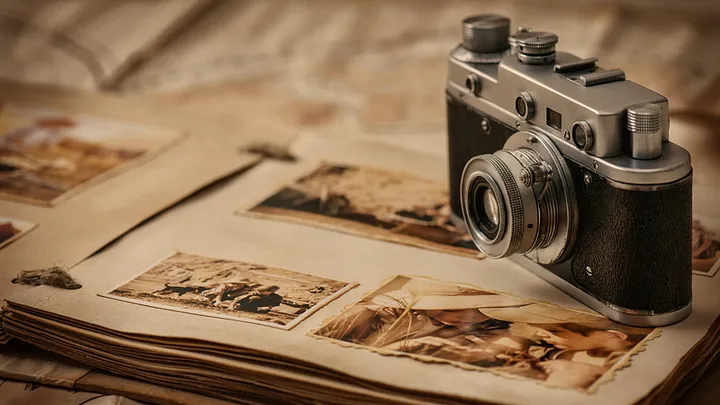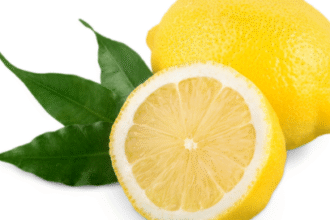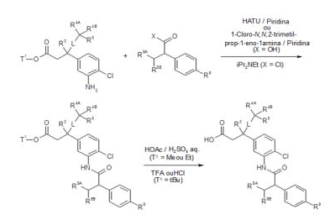Introduction to Brown Pigment in Vintage Photos
Vintage photos have a charm that captures the essence of bygone eras. They often tell stories woven through time, depicting moments frozen in history. However, many collectors and enthusiasts encounter a common issue: brown pigment in vintage photos. This discoloration can obscure details and affect overall image quality, transforming treasured memories into something less appealing.
Understanding this phenomenon is essential for anyone who cherishes old photographs. What causes this unwanted browning? How can we preserve these artifacts for future generations? Dive into the world of vintage photography as we unravel the mysteries behind brown pigments and explore preservation techniques to keep those cherished images alive for years to come.
Causes of Brown Pigment in Vintage Photos
Vintage photos often exhibit a Brown Pigment in Vintage Photos that can be both fascinating and perplexing. This discoloration stems from several factors.
One primary cause is the aging of photo paper. Early photographs were made using organic materials susceptible to degradation over time. As these elements break down, they can lead to browning.
Chemical reactions also play a significant role in this process. Exposure to light, moisture, and heat accelerates these reactions, causing pigments to darken.
Another factor involves the development chemicals used in processing early photographs. Some developers contained compounds that could oxidize and contribute to unwanted hues as they aged.
Improper storage conditions exacerbate the issue. High humidity or fluctuating temperatures create an ideal environment for mold growth or further chemical reaction, intensifying the Brown Pigment in Vintage Photos.
Environmental Factors and Their Impact on Photos
Environmental factors play a crucial role in the deterioration of vintage photos. Humidity, temperature fluctuations, and exposure to light can accelerate the aging process. Moisture is especially damaging, as it fosters mold growth and promotes chemical reactions that lead to Brown Pigment in Vintage Photos formation.
Light exposure also cannot be overlooked. Ultraviolet rays break down photographic materials over time. Even indirect sunlight can cause fading and discoloration, altering the original hues.
Dust and pollutants contribute their share too. Particles settling on photo surfaces may react with chemicals in the prints, resulting in staining or browning.
Storing photographs in optimal conditions—cool temperatures with low humidity—can significantly mitigate these risks. Proper storage methods protect against harmful environmental influences while ensuring your cherished memories remain vibrant for years to come.
Chemical Processes That Lead to Brown Pigment in Vintage Photos
The occurrence of brown pigment in vintage photos often stems from chemical reactions that unfold over time. These processes can transform once-vibrant images into muted, sepia-toned relics.
Oxidation is a primary culprit. When exposed to light, moisture, and air, the chemicals in photographic prints undergo changes that produce brown hues. This reaction can alter dyes and emulsions used in the printing process.
Additionally, impurities within paper or ink can contribute to discoloration as they degrade with age. The breakdown of organic materials leads to an accumulation of browning agents.
Acidic environments also accelerate these transformations. High acidity levels may weaken photo fibers and facilitate unwanted reactions between compounds present in photographs.
Understanding these chemical processes helps photographers and collectors appreciate the fragility of their vintage treasures while motivating careful preservation efforts.
Techniques for Preserving Vintage Photos
Preserving vintage photos requires careful attention and specific techniques. Start by handling them with clean, dry hands to avoid transferring oils or dirt.
Storing these treasures in acid-free materials is essential. Use acid-free envelopes or boxes that provide protection from light and moisture. This helps prevent further deterioration.
Temperature control plays a crucial role as well. Keep your collection in a cool, dark place where humidity levels are stable. A climate-controlled environment can significantly extend the life of these images.
Digitization offers another layer of preservation. Scanning old photographs creates digital copies, allowing you to share and enjoy them without risking damage to the originals.
Consider professional restoration for severely damaged pieces. Experts can remove Brown Pigment in Vintage Photos caused by chemical processes, reviving the photo’s original beauty while preserving its history for years to come.
Importance of Proper Preservation for Future Generations
Proper preservation of vintage photos is crucial for the enjoyment and education of future generations. These images offer a glimpse into our history, capturing moments that define cultures and experiences.
When we take steps to protect these photographs, we ensure that stories remain alive. Each photo holds memories that can inspire curiosity and connection in years to come.
Moreover, preserving these artifacts allows us to document societal changes over time. They serve as visual records of fashion trends, technology advancements, and family dynamics.
Neglecting proper care could result in irreversible damage. Discoloration or physical degradation might erase significant pieces of our heritage entirely.
Investing time and resources into preservation techniques today will pay off immensely tomorrow. It’s about safeguarding not just images but also the narratives they tell for those who will look back at them with wonder.
Conclusion
The presence of brown pigment in vintage photos is a common issue that can pose challenges for collectors and historians alike. Understanding the causes behind this discoloration is vital for anyone looking to preserve their photographic treasures. The impact of environmental factors, such as humidity and light exposure, cannot be understated; they play significant roles in degrading these images over time.
Chemical processes also contribute to the development of unwanted pigments. Factors like the type of paper used or even the chemistry involved in developing photographs can lead to changes that mar their original beauty. Acknowledging these issues allows us to take proactive steps toward preservation.
Employing proper techniques for maintaining vintage photos is essential if we wish to extend their lifespan. Safe handling practices, appropriate storage solutions, and controlled environments are key components for safeguarding these cherished pieces of history.
By caring for our vintage photographs today, we ensure that future generations will have access to visual narratives from the past. It’s not just about preserving images; it’s about keeping stories alive through time-honored memories captured on film.

















